
Caracas, officially Santiago de León de Caracas (CCS), is the capital and largest city of Venezuela, and the center of the Metropolitan Region of Caracas. Caracas is located along the Guaire River in the northern part of the country, within the Caracas Valley of the Venezuelan coastal mountain range. The valley is close to the Caribbean Sea, separated from the coast by a steep 2,200-meter-high (7,200 ft) mountain range, Cerro El Ávila; to the south there are more hills and mountains. The Metropolitan Region of Caracas has an estimated population of almost 5 million inhabitants.

Chacao is one of the five political and administrative subdivisions of the city of Caracas, Venezuela. The other four are Baruta, El Hatillo, Libertador and Sucre. This legal entity is known as the Caracas Metropolitan District. Chacao is also one of the 21 municipalities that make up the State of Miranda, Venezuela.

El Hatillo Municipality is an administrative division of the State of Miranda, Venezuela; along with Baruta, Chacao, Libertador and Sucre, it is one of the five municipalities of Caracas, the capital of Venezuela. It is located in the southeastern area of Caracas, and in the northwestern part of the State of Miranda.

The Libertador Bolivarian Municipality is the only administrative division of the Capital District of Venezuela and along with the municipalities of Baruta, Chacao, El Hatillo and Sucre forms the Metropolitan District of Caracas. It is landlocked by Vargas State and also borders Miranda State on the east and south. The municipality is one of a number in Venezuela named "Libertador Municipality", in honour of Venezuelan independence hero Simón Bolívar.

Las Mercedes is the largest district for shopping and leisure in Latin America. It is located at the Baruta Municipality, Miranda (state), Caracas. It has an estimated area of 93 hectares.

El Rosal is a neighbourhood of Caracas, Venezuela, in the Chacao municipality. It is located at East Caracas, near the geographic center of Caracas and is one of its financial centres. It has an estimated area of 50.9 hectares
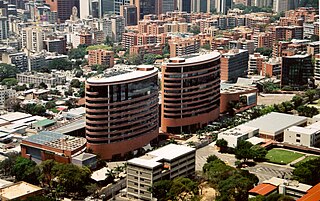
La Castellana is a district in Caracas, Venezuela, located in the northeast part of the city, La Castellana is bordered on the south by Chacao, on the east by Altamira (Caracas) neighbourhood, on the west by Caracas Country Club and Campo Alegre neighbourhood and on the north by El Ávila National Park. It has an approximate surface of 98 hectares.

Campo Alegre is a residential neighborhood located in the Chacao municipality of Caracas, Venezuela. This district holds the hotel Embassy Suites by Hilton , and the most exclusive party room of the city, the "Quinta Esmeralda", meeting point of the Venezuelan upper-class families.
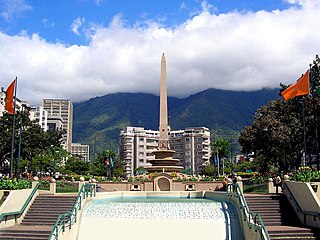
France Square, also known as "Plaza Altamira", is a public space located in Altamira, east Caracas. It was built at the beginning of the 1940s and opened on August 11, 1945, with the original name of "Plaza Altamira". Its name was later changed due to an agreement between the cities of Caracas and Paris to have a Venezuela Square in Paris and a France Square in Caracas. This square was designed by town planner Luis Roche within the project of "Altamira neighborhood", a wealthy district of Chacao municipality in Miranda States.
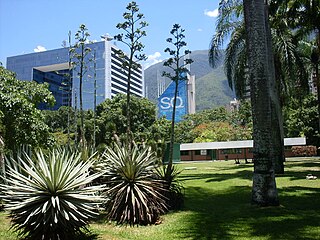
Los Palos Grandes is a residential, tourist and financial district located in the Chacao Municipality in east Caracas, served by the Caracas Metro through the Miranda station of line 1. It has an estimated area of 117 hectares.

The 2014 Venezuelan protests began in February 2014 when hundreds of thousands of Venezuelans protested due to high levels of criminal violence, inflation, and chronic scarcity of basic goods because of policies created the Venezuelan government. The protests have lasted for several months and events are listed below according to the month they had happened.

2015 protests in Venezuela began in the first days of January primarily due to shortages in the country, with the first massive demonstration occurring on 23 January, on the anniversary of the 1958 coup d'etat against dictator Marcos Pérez Jiménez. The series of protests originally began in February 2014 when hundreds of thousands of Venezuelans protested due to high levels of criminal violence, inflation, and chronic scarcity of basic goods because of policies created the Venezuelan government. As of January 2015, over 50 people had been arrested for protesting. The protests are listed below according to the month they had happened.

East Caracas generally refers to the eastern portions of Caracas, and may refer specifically to the municipalities from the Metropolitan District of Caracas located in Miranda State: Chacao, Baruta, Sucre, and El Hatillo. It concentrates the 34.8% population of the Metropolitan District of Caracas, and the 21.7% population of the Greater Caracas Area. Caracas Country Club, the richest neighborhood of the city, is located between El Recreo and Chacao districts.

The Sabana Grande district is divided into several middle class neighborhoods located in the Parroquia El Recreo of the Libertador Municipality, in the geographical center of the Metropolitan District of Caracas and owes its name to the old town of Sabana Grande.
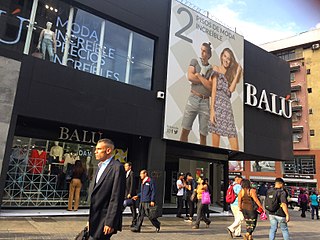
The Boulevard of Sabana Grande is an important leisure and shopping area located in eastern Caracas in the geographic center of the Metropolitan District of Caracas. It is a pedestrian-only, tree-shaded public space. In 2011, the boulevard of Sabana Grande went through a rehabilitation process founded by PDVSA La Estancia. A commercial and financial district, Sabana Grande is the commercial corridor, and a tourist district of Caracas. The boulevard of Sabana Grande is home to the most important ornithological collection in Latin America, the William Phelps Ornithological Collection. Until the beginning of the 20th century, it was called Calle Real because it was the town's main road.

Ciudad Universitaria is a Caracas Metro station on Line 3. It was opened on 18 December 1994 as part of the inaugural section of Line 3 from Plaza Venezuela to El Valle. The station is between Plaza Venezuela and Los Símbolos.
Caracas is the capital and largest city of Venezuela.
Juan Pablo Pernalete Llovera was a student and basketball player killed during the 2017 Venezuelan protests. On 24 May the Attorney General of Venezuela, Luisa Ortega Díaz, declared that an investigation by the Public Ministry concluded that Pernalete died as the result of the impact in his chest of a tear gas canister fired by a National Guardsman. While government officials and pro-government outlets initially alleged that Pernalete had been killed with a captive bolt pistol by fellow protesters, in 2021 Tarek William Saab, Luisa Ortega's successor, acknowledged that Pernelte was killed by a tear gas canister fired by the National Guard.
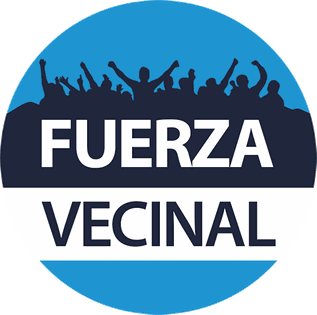
The Neighborhood Force is a centrist and localist Venezuelan political party, founded by a group of mayors and political leaders of the country on June 26, 2021. The party governs throughout eastern Caracas — in the municipalities Baruta, El Hatillo, Los Salias and Chacao— less in the Sucre Municipality. The party also governs the municipalities Diego Bautista Urbaneja and Maneiro, in eastern Venezuela.




















